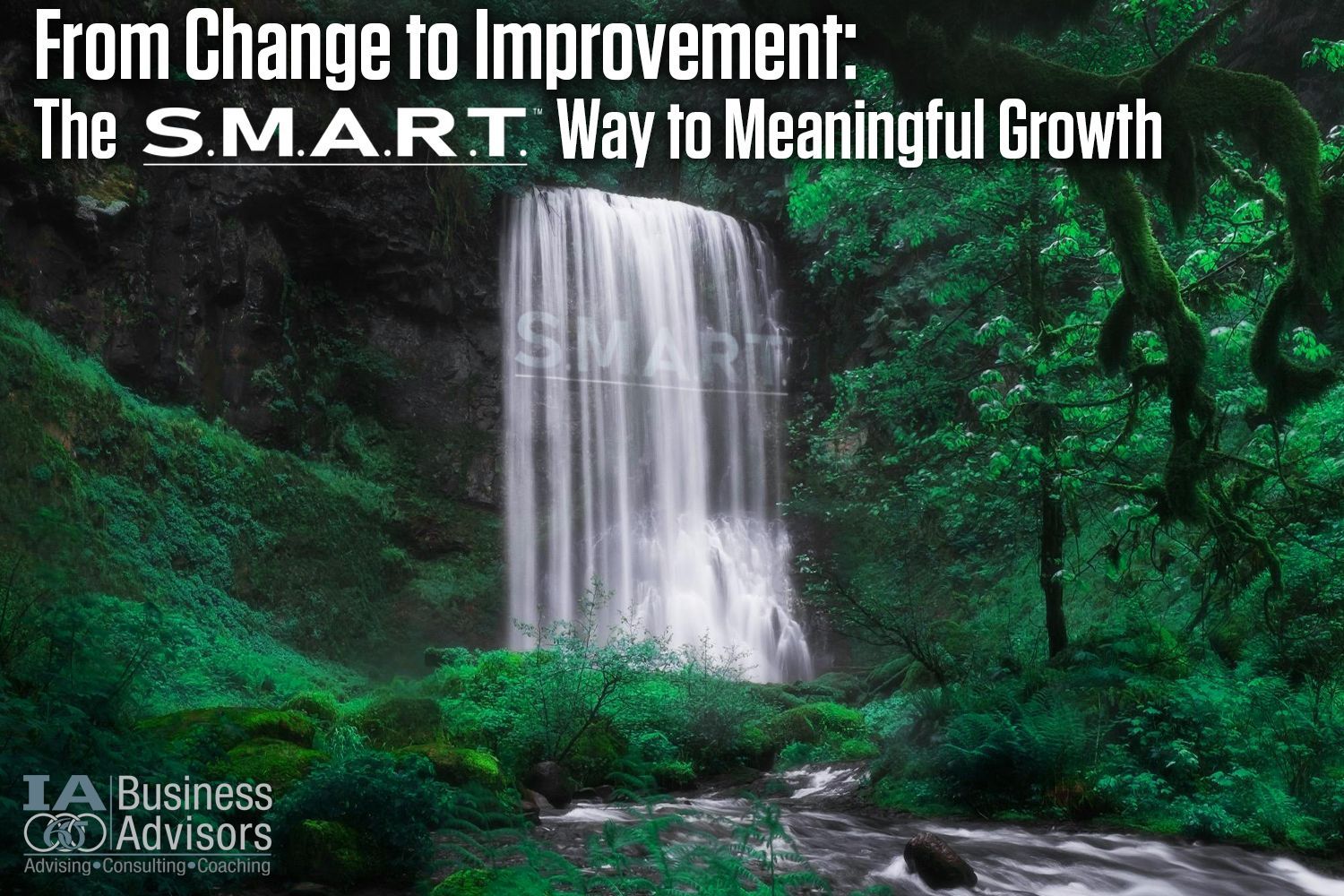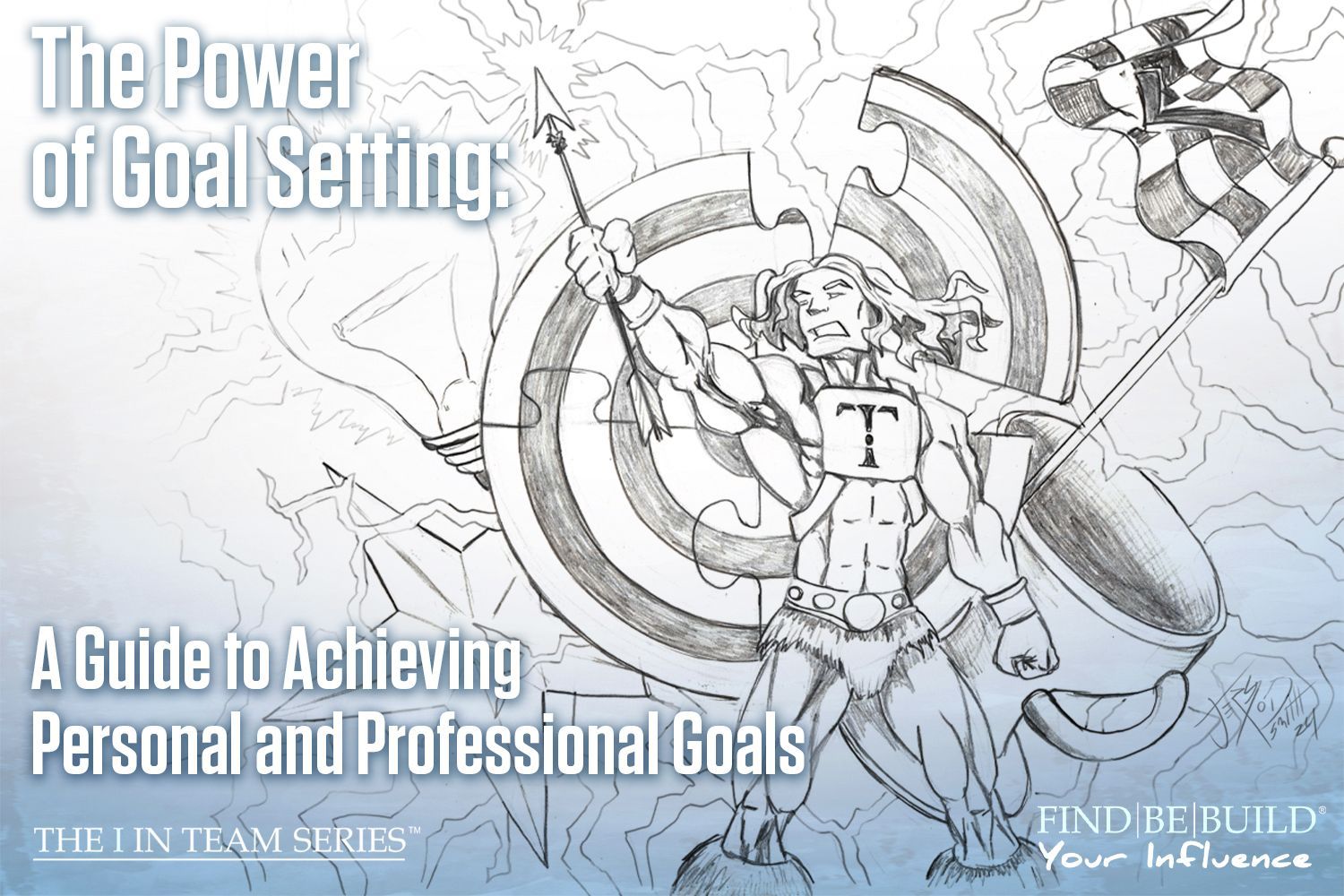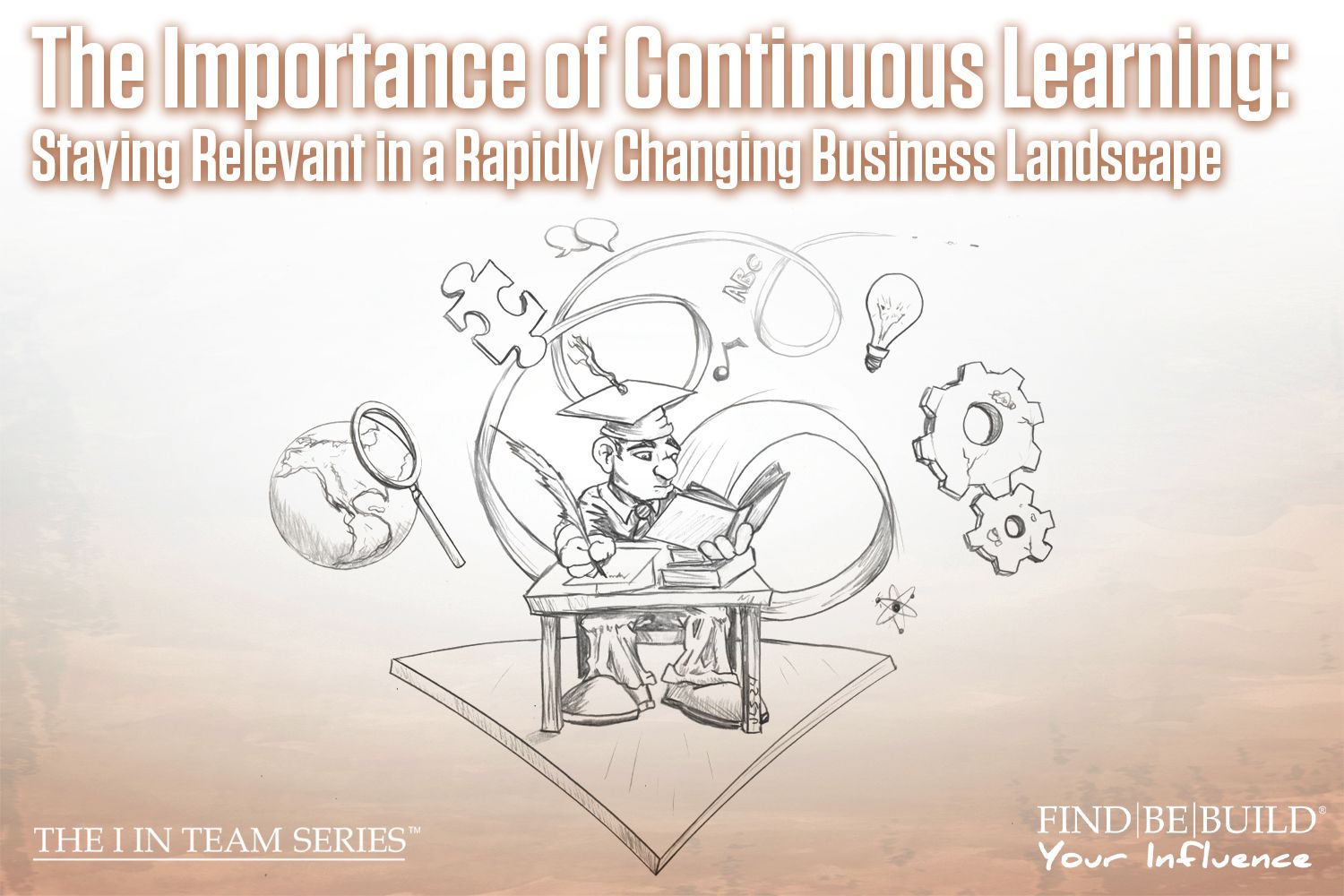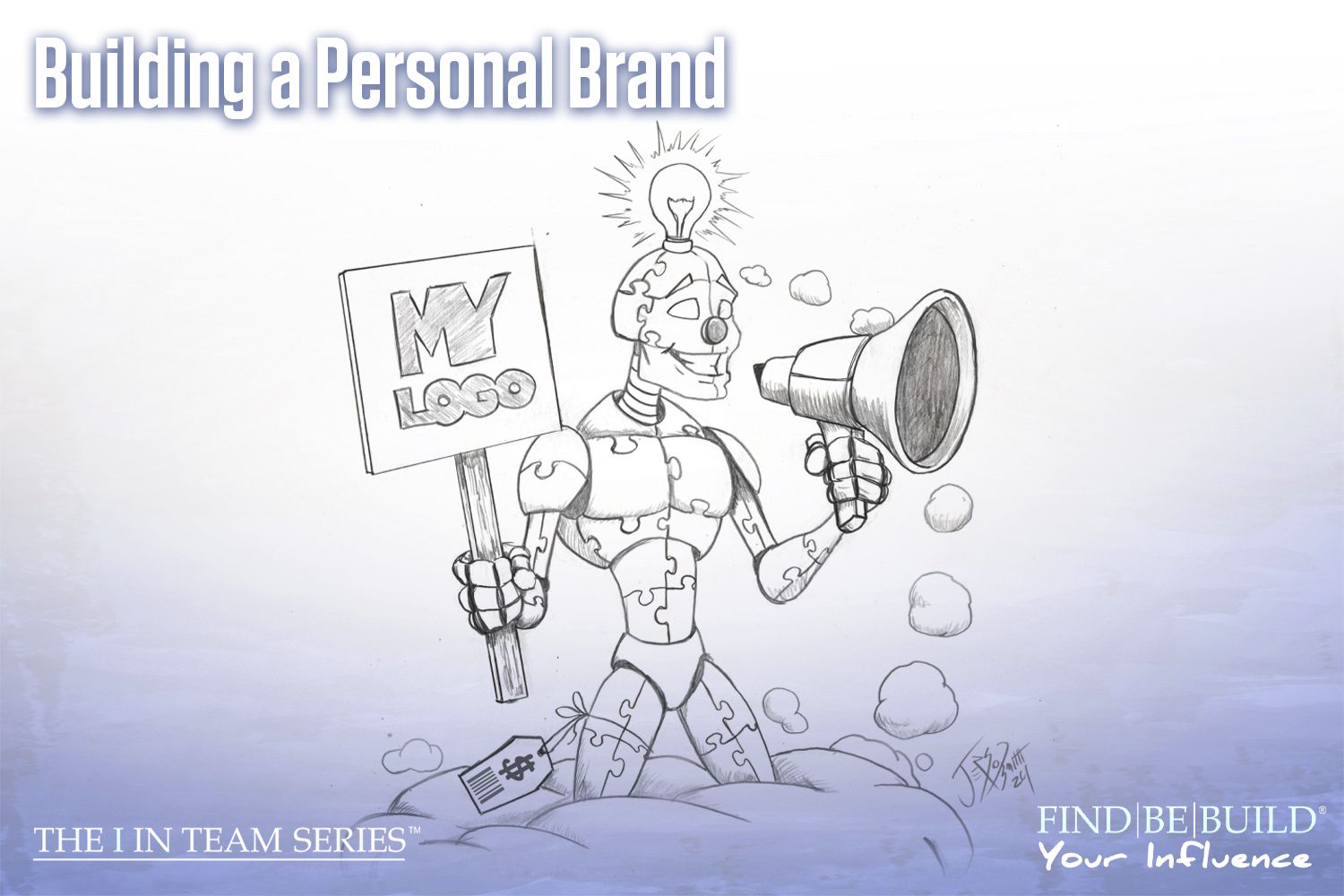Helpful Business & Career Publications
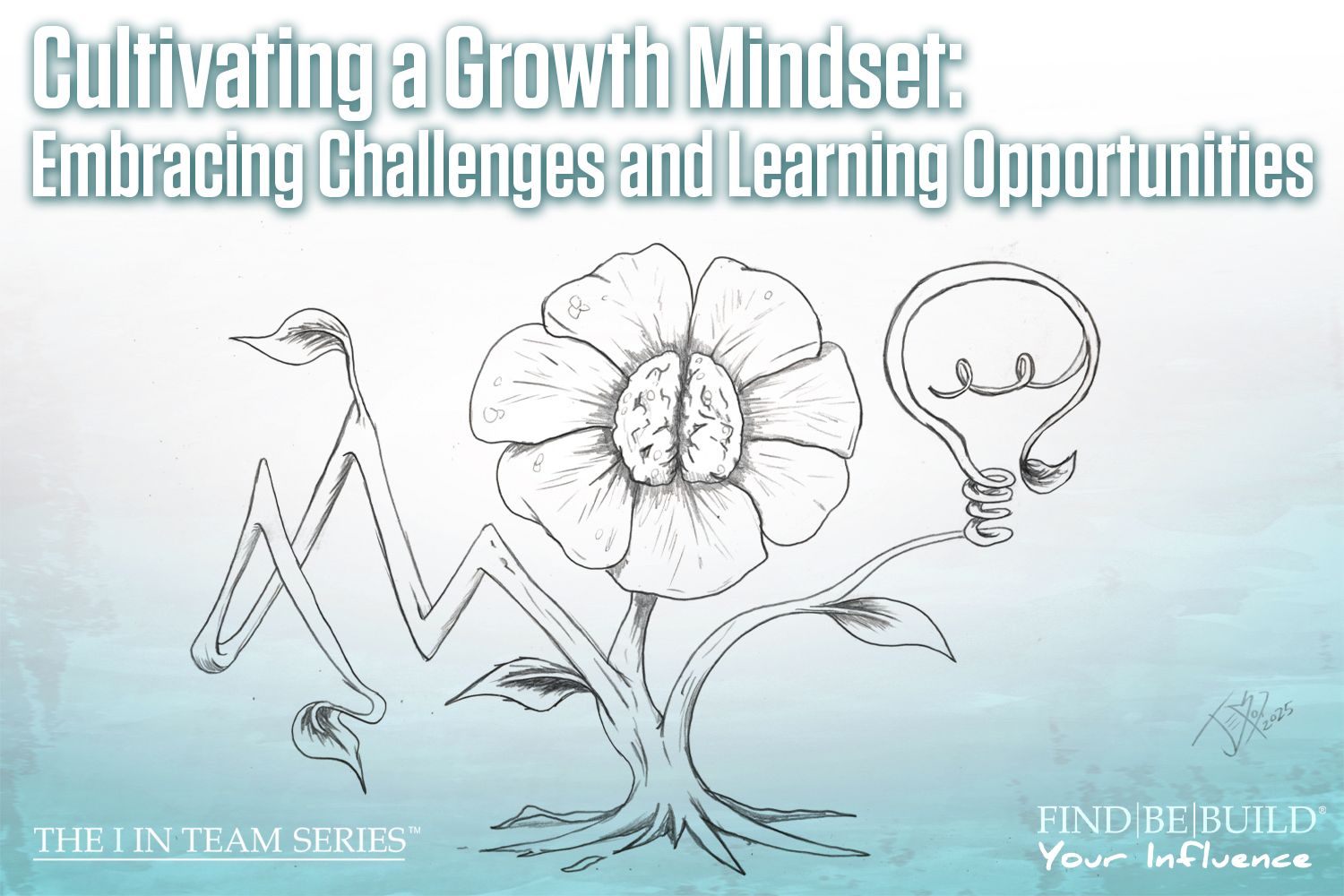
March 4, 2025
Hello, team! Mary here, continuing our journey through the I in Team series, where we empower you to find , be , and build your influence. Cultivating a growth mindset is imperative for self-actualizing. It’s a theory created by Stanford psychologist Carol Dweck , and it’s the belief that we are intelligent with abilities that will help us face and overcome challenges. People with a growth mindset tend to love learning and are resilient. If you don’t already, you can have a growth mindset , too. Here are some of our top tips for embracing challenges. Embrace Effort If you want to grow, you need to understand that effort is the only way to mastery. Your hard work and talent will be rewarded if you remain resilient in the face of challenges and treat them as learning opportunities. When you experience failure , reframe it. Instead of viewing it as something negative, have gratitude toward it for teaching you something new. There is always something to learn from failure, thus allowing you to continue to grow. When you do have a win, pause to celebrate your progress. Acknowledging your small wins and improvements helps reinforce the belief that growth is possible through continual effort. Embrace Challenges To grow, you need to be challenged. As stated, you need to fail. Without challenges, you don’t give yourself the opportunity to win or fail, so you deny yourself the ability to learn. Actively seek out challenges that push you outside your comfort zone. The more you embrace challenges, the more accustomed your brain becomes to seeing them as opportunities for growth instead of threats. Over the long-term, this will help you develop mental toughness. When setbacks happen, bounce back and remind yourself that it’s just a temporary obstacle. Resilience will help you continue on your developmental path. Seek Feedback Many people shy away from actively seeking feedback, however, feedback is extremely valuable. It helps you gain insights on how to improve and grow. Having a mentor or someone in the field who has experience will be excellent sources for reliable feedback. If you’re nervous, consider first cultivating a sense of curiosity. By exploring new ideas, techniques, and approaches, you prime your mind for actively seeking new information. Doing so will help you discover creative solutions to challenges you will inevitably face. Surround Yourself with Positive Influence Our entire platform revolves around positive influence, so, as a brand, we are constantly encouraging you to adopt a growth mindset. But it’s not just us! Anyone who pushes you to do your best and who believes in your developmental potential is someone who is a positive influence in your life. These positive, supportive environments foster a growth mindset. Be sure to challenge your negative self-talk (if you have any). Positive self-talk is being a positive influence on yourself. Use phrases like, “I can do this,” and “This is an opportunity to improve.” Don’t miss out on our positive influence: The Ripple Effect (TEDx Talk by Brian Smith) Daily Influence Podcast Individual Influence: Find the “I” in Team Positive Influence: Be the “I” in Team Responsible Influence: Build the “I” in Team Bottom Line Developing a growth mindset is the only way to progress as an individual. If you have no practice with this, start slowly by embracing your effort and developing positive self-talk. Look for people in your life who encourage you and ask for feedback from trusted mentors. Don’t shy away from facing challenges, but don’t give up when you experience failure. Look at every moment as an opportunity to learn and be sure to pause to celebrate your victories. You can do this!

February 4, 2025
Tax season is here , and businesses are facing one of the most significant shifts in tax policy in recent years. With over 60 tax provisions changing in 2025—including corporate tax rate adjustments, the expiration of key deductions, and increased IRS reporting requirements—navigating compliance while optimizing financial strategy is more complex than ever. Failing to stay ahead of these changes can lead to unnecessary tax liabilities, missed deductions, and potential penalties. That’s why businesses are turning to IA Business Advisors , whose S.M.A.R.T. (Strategic, Measurable, Attainable, Realistic, Timely) Management™ approach ensures your business remains compliant while maximizing financial opportunities during tax season. Why the S.M.A.R.T. Approach is Essential for Tax Planning IA Business Advisors employs the S.M.A.R.T. Management™ approach to help clients navigate complex challenges, such as the 2025 tax changes. This methodology emphasizes: Specificity – Tailoring tax strategies to fit your business’s unique needs. Measurability – Ensuring financial data and tax obligations are precisely tracked. Attainability – Implementing realistic financial strategies that align with your goals. Relevance – Adapting tax solutions to current regulations and economic conditions. Timeliness – Addressing tax compliance and planning proactively, avoiding last-minute stress. By applying S.M.A.R.T. principles , IA Business Advisors assists businesses in developing tailored strategies that ensure compliance and optimize financial outcomes during tax season . The 2025 Tax Landscape: What Business Owners Need to Know Before diving into why outsourcing bookkeeping is the S.M.A.R.T. way to handle tax season, let's examine some of the most impactful tax changes in 2025: 1. Corporate Tax Rate Uncertainty The Tax Cuts and Jobs Act (TCJA) of 2017 reduced the corporate tax rate from 35% to 21%, providing major relief for businesses. However, this provision is set to expire at the end of 2025, potentially raising tax rates again unless Congress intervenes. Strategic tax planning is essential to mitigate financial impacts. 2. Small Businesses Face Higher Tax Burdens Many small businesses operate as pass-through entities (LLCs, S-Corps, sole proprietorships), where income is taxed at individual rates. The 20% Qualified Business Income (QBI) deduction , which significantly lowers tax liability for these entities, is also set to expire after 2025. This could mean a sharp increase in tax bills for business owners. 3. Reduced Deductions & Credits Several beneficial tax provisions are phasing out or changing, including: Bonus Depreciation : The 100% bonus depreciation for capital investments will drop to 50% in 2025, reducing immediate tax relief for equipment and property purchases. Research & Development (R&D) Deduction : R&D expenses must continue to be amortized over five years instead of being deducted immediately, impacting cash flow for businesses investing in innovation. State Tax Adjustments : Several states are decoupling from federal tax provisions, making compliance more complex for businesses operating in multiple states. 4. Increased IRS Scrutiny & Reporting Requirements The IRS has tightened financial reporting requirements, and businesses must provide more detailed records for income, deductions, and tax credits. Stronger enforcement measures mean that errors, discrepancies, or missing records could result in audits and financial penalties. With these changes, precision in bookkeeping and tax planning is more critical than ever . The best way to ensure compliance, minimize tax burdens, and optimize financial planning is to outsource bookkeeping to tax experts who stay ahead of evolving regulations. The Benefits of Outsourcing Bookkeeping for the 2025 Tax Season 1. Ensure Compliance & Avoid Costly Mistakes Tax law is intricate, and 2025 is bringing more complexity than ever before. Even small bookkeeping errors can lead to penalties, delays, or an IRS audit. By outsourcing to IA Business Advisors , you ensure that: Your financial records are meticulously maintained All tax law changes are applied correctly You meet reporting and compliance requirements 2. Maximize Deductions & Reduce Tax Liabilities Many businesses overpay in taxes because they fail to capture all eligible deductions and credits. With our expertise, we help you identify and maximize tax-saving opportunities, including: Energy-Efficient Building Deductions (Section 179D) for sustainability upgrades Work Opportunity Tax Credit (WOTC) for hiring employees from targeted groups Qualified Business Income (QBI) Deduction for pass-through entities Employee Retention Credit (ERC) for businesses keeping their workforce intact Disabled Access Credit for improving accessibility in your business 3. Stay Prepared for the IRS's Stricter Reporting Standards With the IRS ramping up compliance enforcement, financial record accuracy is more important than ever. We help you: Prepare for IRS reporting changes and audits Ensure accurate record-keeping to meet IRS standards Seamlessly transition to mandatory digital tax filing 4. Save Time & Resources – Focus on Growing Your Business Managing your bookkeeping in-house can be time-consuming, costly, and stressful. Outsourcing frees up valuable resources so you can: Focus on business growth instead of tax paperwork Reduce overhead costs associated with in-house accounting staff Ensure your financial data is always up to date and audit-ready 5. Implement Smart Tax Planning Strategies With potential corporate and individual tax rate increases, businesses need to plan strategically. IA Business Advisors can help you: Accelerate income recognition to benefit from lower tax rates now Defer deductions to offset higher taxes in the future Optimize depreciation deductions to maximize tax relief Future-Proof Your Business with IA Business Advisors The 2025 tax season isn’t just about compliance—it’s about strategy. Outsourcing bookkeeping is a proactive investment that ensures your business stays financially healthy and well-positioned for growth, even amid shifting tax regulations. With IA Business Advisors , you’re not just outsourcing bookkeeping—you’re gaining a trusted financial partner who will guide you through tax season with precision, efficiency, and expertise. Don’t Wait—Get Your Books in Order Now Tax season is in full swing, and the longer you wait, the harder it becomes to stay ahead of deadlines and maximize tax benefits. Let us handle the complexities of bookkeeping and tax planning so you can focus on what you do best—growing your business. Contact IA Business Advisors today and take the stress out of bookkeeping and tax season!

December 9, 2024
Driving with Clarity: Why Your Small Business Needs a Cash Flow Model Running a small business is much like driving a car—you need clarity to stay on course. At IA Business Advisors, we believe clarity comes from making decisions grounded in S.M.A.R.T. principles: those that are Specific, Measurable, Attainable, Realistic, and Timely. Yet, too many small business owners rely solely on their income statements. While valuable, these statements function like the rearview mirror: they reflect where you’ve been, not where you’re headed. If your goal is to grow or address cash flow challenges, focusing only on past performance can leave you unprepared for what’s ahead. That’s where a Cash Flow Model—your windshield view—provides clarity and empowers you to lead your business with confidence.
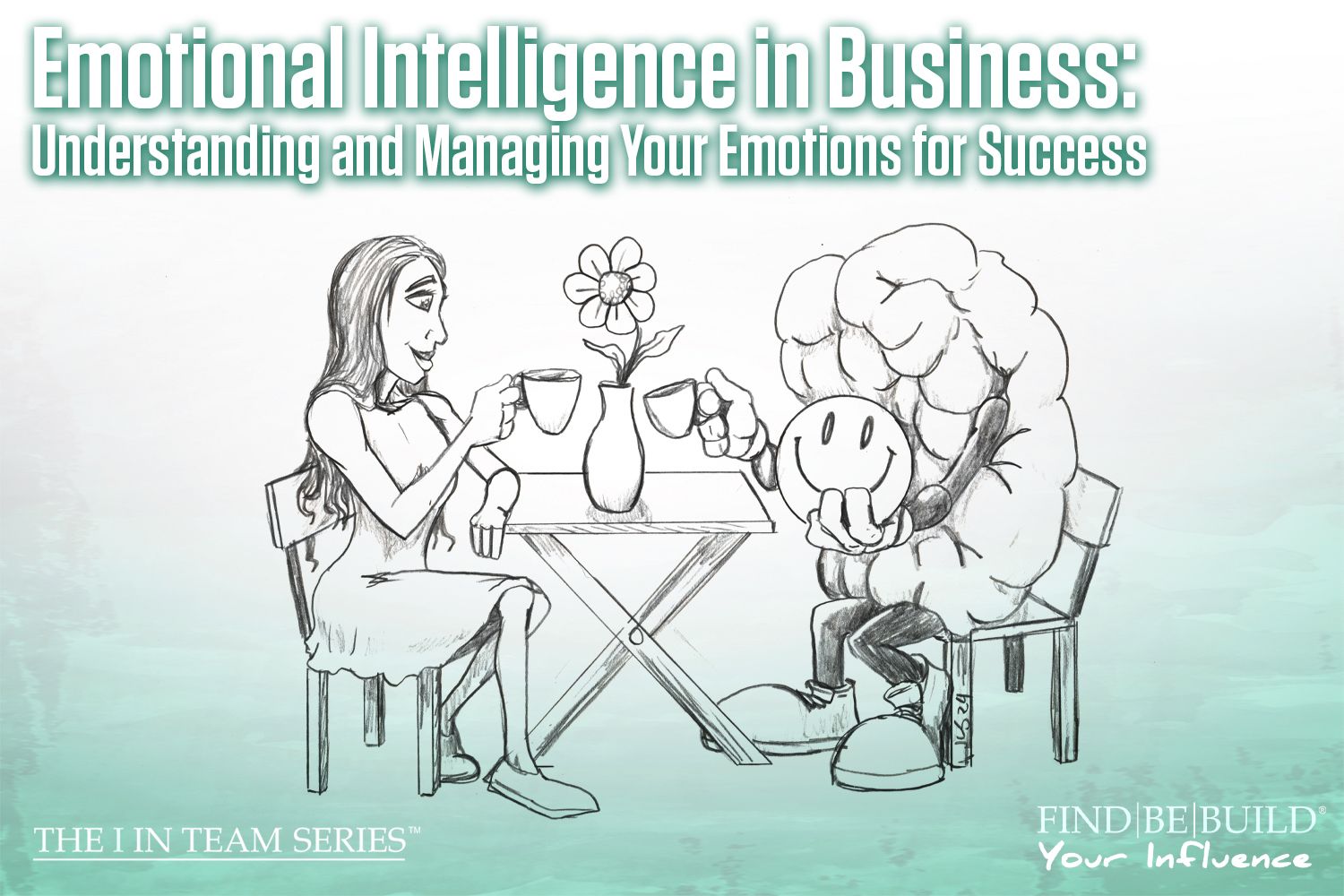
October 24, 2024
Hello, team! Mary here, continuing our journey through the I in Team series, where we empower you to find , be , and build your influence. Brian and I discuss emotional intelligence in our book series and we wanted to bring some of the topics we discuss to you here as well. If you’re curious about diving deeper into emotional intelligence, check out our series and the other books linked in this article. If you just need a refresher, the following tips are for you. Pause Before Reacting When faced with difficult or emotional situations, take a moment to pause, breathe, and reflect. Reacting based on your emotions will likely not help the situation and could make things worse. By taking a moment to pause, we allow ourselves to sit with our emotions, understand why they are happening and where they are coming from, and consider how we want to respond to move the situation forward in a productive way. At times, you will be able to pause for a moment and think, but other times, you might need to step away and take a walk or a day to respond. By developing healthy coping strategies , you can handle tough moments with poise. If it helps you, write down the situations that evoke certain emotions. Over time, you may see a pattern which could aid you in knowing when you need to pause in the future. Build Rapport Building relationships with the people you work with, whether they be team members, clients, vendors, etc., can help support your ability to be emotionally intelligent because it develops both social skills and empathy for others. We build relationships through active listening, cooperation, and open communication. By making others feel valued, we set ourselves up to collaborate with them more effectively. Build relationships by asking questions and being genuinely interested in the responses. This strengthens bonds and helps you see the other person as a person and not an object (thus, building empathy). Book Recommendation: Leadership and Self-Deception Additionally, practice mastering non-verbal communication . Understanding body language, tone, and facial expressions can tell you a lot about what someone isn’t saying. The better you get to know someone, the easier you will be able to understand their non-verbal cues. Develop an Emotional Vocabulary Dr. Brene Brown said it best, “If we want to find the way back to ourselves and one another, we need language and the grounded confidence to both tell our stories and be stewards of the stories that we hear. This is the framework for meaningful connection.” Said another less-eloquent way, when we understand our emotional experience and have the language to describe it, we create paths for connection. Book Recommendation: Atlas of the Heart The above recommended book contains 87 different emotions researched over decades to help us gain a better emotional vocabulary to describe our and others’ experiences . In developing our emotional vocabulary, we improve the clarity of our conversations and reduce confusion that can lead to more detrimental emotions and situation. Encourage Emotional Intelligence in Others At times, it can be a lot easier to understand and manage our own emotions when we are surrounded by others who share our drive to be emotionally intelligent. Start by encouraging emotional intelligence in others on your team. Lead by example and model good emotional habits (like those listed here). Your emotional tone helps set the culture for the workspace. By understanding and managing emotions, we help lift our team’s culture and demonstrate how successful we can be by being emotionally intelligent. Bottom Line Understanding and managing our emotions for increased emotional intelligence helps us navigate complex interpersonal dynamics which is crucial for long-term success in business. Consider when you need to take a step back, build positive relationships with those you work with, develop your emotional vocabulary, and lead by example to help others realize how valuable emotional intelligence is.
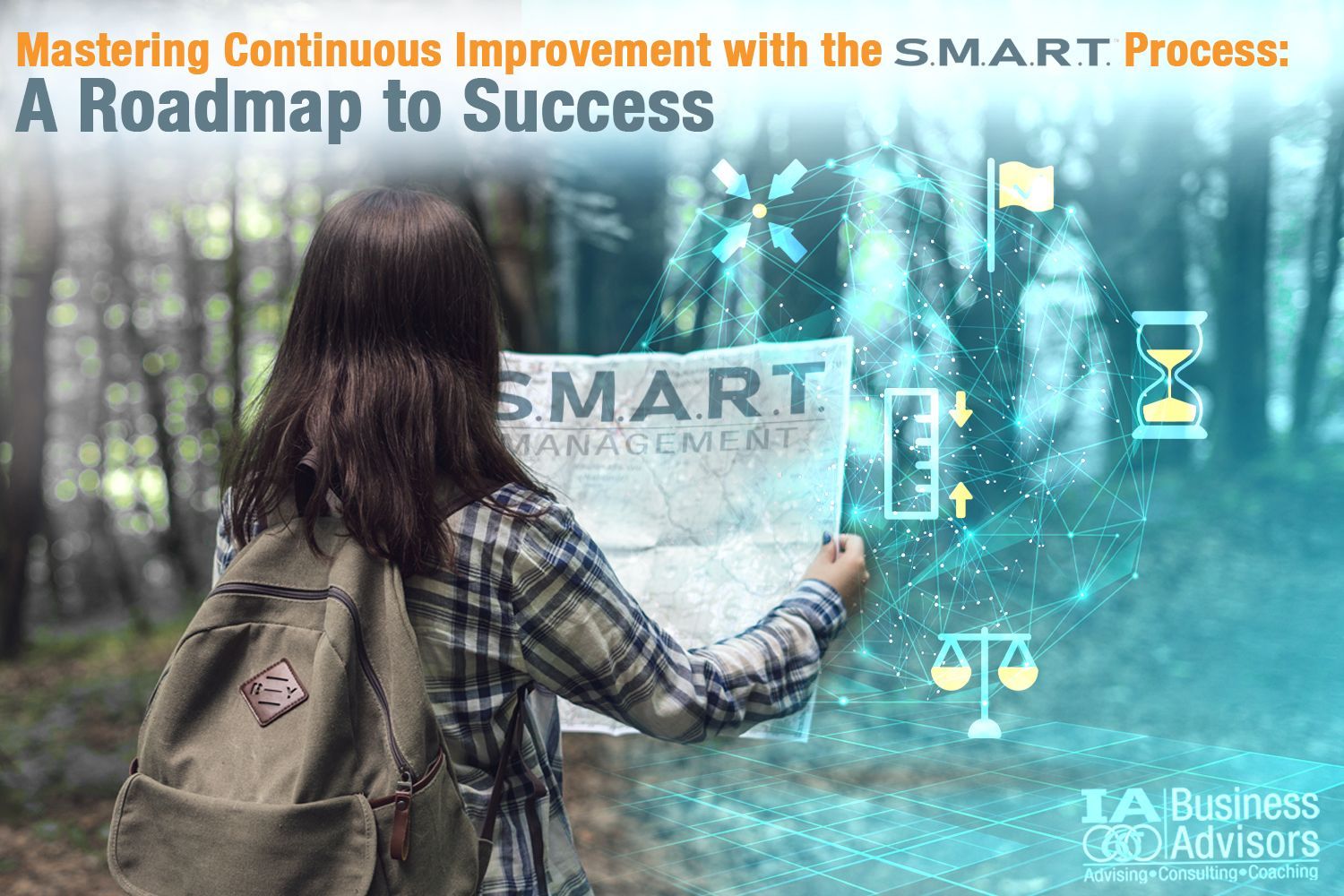
October 22, 2024
In a world that’s constantly evolving, the most successful individuals and organizations are those that embrace continuous improvement. But it’s not just about making small adjustments. True continuous improvement is a structured approach to self-assessment, goal setting, and execution. At its core, continuous improvement is the practice of continually refining processes, products, or skills to enhance performance and efficiency. Whether you're leading a team or seeking personal development, the key to success lies in setting clear, actionable S.M.A.R.T. Goals. This is where the S.M.A.R.T. process comes into play—a simple yet powerful tool that transforms improvement from a vague concept into measurable, actionable steps. The S.M.A.R.T. Framework for Continuous Improvement To make continuous improvement practical, you need a roadmap. The S.M.A.R.T. framework—Specific, Measurable, Achievable, Relevant, Timely—ensures that your goals are clear and attainable, while pushing you to stay focused on consistent progress. Specific : Broad goals like "I want to improve my business" are difficult to act upon. Instead, break down your goals into specific actions. For example, "I want to increase customer satisfaction by reducing response times." Measurable : Improvement should be quantifiable. If you're working on reducing response times, set a measurable target, like "Reduce average response times by 20% over the next quarter." This helps you track progress and ensures you're moving toward your goal. Achievable : Continuous improvement should stretch your abilities but not set you up for failure. Ensure that the goals you set are realistic given your current resources and capabilities. If your team struggles with resources, scaling response times by 50% may not be achievable—but 20% might be. Relevant : Improvement efforts should align with your broader objectives. Before setting a goal, ask yourself how it supports your overall vision. In this case, faster response times directly tie into improving customer experience and satisfaction—making it a relevant focus. Timely : Without a deadline, goals risk becoming indefinite projects that never fully materialize. Set a clear timeline for achieving your goals—e.g., “Reduce response times by 20% in the next three months”—and hold yourself accountable. Creating a Culture of Continuous Improvement For businesses, embedding continuous improvement into the company culture can yield incredible results. Employees become more engaged, inefficiencies are identified and addressed faster, and innovation thrives. It’s not just about solving problems—it’s about consistently asking, “How can we be better?” On an individual level, the S.M.A.R.T. process can also be a game-changer. It pushes you to identify areas of growth, take control of your progress, and actively pursue success. Whether it’s learning new skills or refining processes at work, having clear, measurable goals allows you to make tangible improvements over time. The Power of Reflection and Feedback Another key to continuous improvement is building in regular periods of reflection. Are your S.M.A.R.T. Goals working? Have you achieved the milestones you set? This reflective practice enables you to adjust your approach as needed. Similarly, feedback is an essential part of the process. Encouraging open communication with colleagues, mentors, or even customers can provide valuable insights that drive improvement. Treat feedback as a tool for growth, not criticism, and integrate it into your improvement strategy. Conclusion: Start Your Continuous Improvement Journey Today The path to success is paved with consistent effort and strategic thinking. By adopting the S.M.A.R.T. approach to continuous improvement, you can transform the way you work and lead, ensuring that progress is not only possible but measurable and sustainable. Now, ask yourself: What’s one S.M.A.R.T. improvement you can start working on today? Take the first step on your continuous improvement journey, and watch how incremental changes lead to extraordinary results.

March 4, 2025
Hello, team! Mary here, continuing our journey through the I in Team series, where we empower you to find , be , and build your influence. Cultivating a growth mindset is imperative for self-actualizing. It’s a theory created by Stanford psychologist Carol Dweck , and it’s the belief that we are intelligent with abilities that will help us face and overcome challenges. People with a growth mindset tend to love learning and are resilient. If you don’t already, you can have a growth mindset , too. Here are some of our top tips for embracing challenges. Embrace Effort If you want to grow, you need to understand that effort is the only way to mastery. Your hard work and talent will be rewarded if you remain resilient in the face of challenges and treat them as learning opportunities. When you experience failure , reframe it. Instead of viewing it as something negative, have gratitude toward it for teaching you something new. There is always something to learn from failure, thus allowing you to continue to grow. When you do have a win, pause to celebrate your progress. Acknowledging your small wins and improvements helps reinforce the belief that growth is possible through continual effort. Embrace Challenges To grow, you need to be challenged. As stated, you need to fail. Without challenges, you don’t give yourself the opportunity to win or fail, so you deny yourself the ability to learn. Actively seek out challenges that push you outside your comfort zone. The more you embrace challenges, the more accustomed your brain becomes to seeing them as opportunities for growth instead of threats. Over the long-term, this will help you develop mental toughness. When setbacks happen, bounce back and remind yourself that it’s just a temporary obstacle. Resilience will help you continue on your developmental path. Seek Feedback Many people shy away from actively seeking feedback, however, feedback is extremely valuable. It helps you gain insights on how to improve and grow. Having a mentor or someone in the field who has experience will be excellent sources for reliable feedback. If you’re nervous, consider first cultivating a sense of curiosity. By exploring new ideas, techniques, and approaches, you prime your mind for actively seeking new information. Doing so will help you discover creative solutions to challenges you will inevitably face. Surround Yourself with Positive Influence Our entire platform revolves around positive influence, so, as a brand, we are constantly encouraging you to adopt a growth mindset. But it’s not just us! Anyone who pushes you to do your best and who believes in your developmental potential is someone who is a positive influence in your life. These positive, supportive environments foster a growth mindset. Be sure to challenge your negative self-talk (if you have any). Positive self-talk is being a positive influence on yourself. Use phrases like, “I can do this,” and “This is an opportunity to improve.” Don’t miss out on our positive influence: The Ripple Effect (TEDx Talk by Brian Smith) Daily Influence Podcast Individual Influence: Find the “I” in Team Positive Influence: Be the “I” in Team Responsible Influence: Build the “I” in Team Bottom Line Developing a growth mindset is the only way to progress as an individual. If you have no practice with this, start slowly by embracing your effort and developing positive self-talk. Look for people in your life who encourage you and ask for feedback from trusted mentors. Don’t shy away from facing challenges, but don’t give up when you experience failure. Look at every moment as an opportunity to learn and be sure to pause to celebrate your victories. You can do this!

February 4, 2025
Tax season is here , and businesses are facing one of the most significant shifts in tax policy in recent years. With over 60 tax provisions changing in 2025—including corporate tax rate adjustments, the expiration of key deductions, and increased IRS reporting requirements—navigating compliance while optimizing financial strategy is more complex than ever. Failing to stay ahead of these changes can lead to unnecessary tax liabilities, missed deductions, and potential penalties. That’s why businesses are turning to IA Business Advisors , whose S.M.A.R.T. (Strategic, Measurable, Attainable, Realistic, Timely) Management™ approach ensures your business remains compliant while maximizing financial opportunities during tax season. Why the S.M.A.R.T. Approach is Essential for Tax Planning IA Business Advisors employs the S.M.A.R.T. Management™ approach to help clients navigate complex challenges, such as the 2025 tax changes. This methodology emphasizes: Specificity – Tailoring tax strategies to fit your business’s unique needs. Measurability – Ensuring financial data and tax obligations are precisely tracked. Attainability – Implementing realistic financial strategies that align with your goals. Relevance – Adapting tax solutions to current regulations and economic conditions. Timeliness – Addressing tax compliance and planning proactively, avoiding last-minute stress. By applying S.M.A.R.T. principles , IA Business Advisors assists businesses in developing tailored strategies that ensure compliance and optimize financial outcomes during tax season . The 2025 Tax Landscape: What Business Owners Need to Know Before diving into why outsourcing bookkeeping is the S.M.A.R.T. way to handle tax season, let's examine some of the most impactful tax changes in 2025: 1. Corporate Tax Rate Uncertainty The Tax Cuts and Jobs Act (TCJA) of 2017 reduced the corporate tax rate from 35% to 21%, providing major relief for businesses. However, this provision is set to expire at the end of 2025, potentially raising tax rates again unless Congress intervenes. Strategic tax planning is essential to mitigate financial impacts. 2. Small Businesses Face Higher Tax Burdens Many small businesses operate as pass-through entities (LLCs, S-Corps, sole proprietorships), where income is taxed at individual rates. The 20% Qualified Business Income (QBI) deduction , which significantly lowers tax liability for these entities, is also set to expire after 2025. This could mean a sharp increase in tax bills for business owners. 3. Reduced Deductions & Credits Several beneficial tax provisions are phasing out or changing, including: Bonus Depreciation : The 100% bonus depreciation for capital investments will drop to 50% in 2025, reducing immediate tax relief for equipment and property purchases. Research & Development (R&D) Deduction : R&D expenses must continue to be amortized over five years instead of being deducted immediately, impacting cash flow for businesses investing in innovation. State Tax Adjustments : Several states are decoupling from federal tax provisions, making compliance more complex for businesses operating in multiple states. 4. Increased IRS Scrutiny & Reporting Requirements The IRS has tightened financial reporting requirements, and businesses must provide more detailed records for income, deductions, and tax credits. Stronger enforcement measures mean that errors, discrepancies, or missing records could result in audits and financial penalties. With these changes, precision in bookkeeping and tax planning is more critical than ever . The best way to ensure compliance, minimize tax burdens, and optimize financial planning is to outsource bookkeeping to tax experts who stay ahead of evolving regulations. The Benefits of Outsourcing Bookkeeping for the 2025 Tax Season 1. Ensure Compliance & Avoid Costly Mistakes Tax law is intricate, and 2025 is bringing more complexity than ever before. Even small bookkeeping errors can lead to penalties, delays, or an IRS audit. By outsourcing to IA Business Advisors , you ensure that: Your financial records are meticulously maintained All tax law changes are applied correctly You meet reporting and compliance requirements 2. Maximize Deductions & Reduce Tax Liabilities Many businesses overpay in taxes because they fail to capture all eligible deductions and credits. With our expertise, we help you identify and maximize tax-saving opportunities, including: Energy-Efficient Building Deductions (Section 179D) for sustainability upgrades Work Opportunity Tax Credit (WOTC) for hiring employees from targeted groups Qualified Business Income (QBI) Deduction for pass-through entities Employee Retention Credit (ERC) for businesses keeping their workforce intact Disabled Access Credit for improving accessibility in your business 3. Stay Prepared for the IRS's Stricter Reporting Standards With the IRS ramping up compliance enforcement, financial record accuracy is more important than ever. We help you: Prepare for IRS reporting changes and audits Ensure accurate record-keeping to meet IRS standards Seamlessly transition to mandatory digital tax filing 4. Save Time & Resources – Focus on Growing Your Business Managing your bookkeeping in-house can be time-consuming, costly, and stressful. Outsourcing frees up valuable resources so you can: Focus on business growth instead of tax paperwork Reduce overhead costs associated with in-house accounting staff Ensure your financial data is always up to date and audit-ready 5. Implement Smart Tax Planning Strategies With potential corporate and individual tax rate increases, businesses need to plan strategically. IA Business Advisors can help you: Accelerate income recognition to benefit from lower tax rates now Defer deductions to offset higher taxes in the future Optimize depreciation deductions to maximize tax relief Future-Proof Your Business with IA Business Advisors The 2025 tax season isn’t just about compliance—it’s about strategy. Outsourcing bookkeeping is a proactive investment that ensures your business stays financially healthy and well-positioned for growth, even amid shifting tax regulations. With IA Business Advisors , you’re not just outsourcing bookkeeping—you’re gaining a trusted financial partner who will guide you through tax season with precision, efficiency, and expertise. Don’t Wait—Get Your Books in Order Now Tax season is in full swing, and the longer you wait, the harder it becomes to stay ahead of deadlines and maximize tax benefits. Let us handle the complexities of bookkeeping and tax planning so you can focus on what you do best—growing your business. Contact IA Business Advisors today and take the stress out of bookkeeping and tax season!

December 9, 2024
Driving with Clarity: Why Your Small Business Needs a Cash Flow Model Running a small business is much like driving a car—you need clarity to stay on course. At IA Business Advisors, we believe clarity comes from making decisions grounded in S.M.A.R.T. principles: those that are Specific, Measurable, Attainable, Realistic, and Timely. Yet, too many small business owners rely solely on their income statements. While valuable, these statements function like the rearview mirror: they reflect where you’ve been, not where you’re headed. If your goal is to grow or address cash flow challenges, focusing only on past performance can leave you unprepared for what’s ahead. That’s where a Cash Flow Model—your windshield view—provides clarity and empowers you to lead your business with confidence.

October 24, 2024
Hello, team! Mary here, continuing our journey through the I in Team series, where we empower you to find , be , and build your influence. Brian and I discuss emotional intelligence in our book series and we wanted to bring some of the topics we discuss to you here as well. If you’re curious about diving deeper into emotional intelligence, check out our series and the other books linked in this article. If you just need a refresher, the following tips are for you. Pause Before Reacting When faced with difficult or emotional situations, take a moment to pause, breathe, and reflect. Reacting based on your emotions will likely not help the situation and could make things worse. By taking a moment to pause, we allow ourselves to sit with our emotions, understand why they are happening and where they are coming from, and consider how we want to respond to move the situation forward in a productive way. At times, you will be able to pause for a moment and think, but other times, you might need to step away and take a walk or a day to respond. By developing healthy coping strategies , you can handle tough moments with poise. If it helps you, write down the situations that evoke certain emotions. Over time, you may see a pattern which could aid you in knowing when you need to pause in the future. Build Rapport Building relationships with the people you work with, whether they be team members, clients, vendors, etc., can help support your ability to be emotionally intelligent because it develops both social skills and empathy for others. We build relationships through active listening, cooperation, and open communication. By making others feel valued, we set ourselves up to collaborate with them more effectively. Build relationships by asking questions and being genuinely interested in the responses. This strengthens bonds and helps you see the other person as a person and not an object (thus, building empathy). Book Recommendation: Leadership and Self-Deception Additionally, practice mastering non-verbal communication . Understanding body language, tone, and facial expressions can tell you a lot about what someone isn’t saying. The better you get to know someone, the easier you will be able to understand their non-verbal cues. Develop an Emotional Vocabulary Dr. Brene Brown said it best, “If we want to find the way back to ourselves and one another, we need language and the grounded confidence to both tell our stories and be stewards of the stories that we hear. This is the framework for meaningful connection.” Said another less-eloquent way, when we understand our emotional experience and have the language to describe it, we create paths for connection. Book Recommendation: Atlas of the Heart The above recommended book contains 87 different emotions researched over decades to help us gain a better emotional vocabulary to describe our and others’ experiences . In developing our emotional vocabulary, we improve the clarity of our conversations and reduce confusion that can lead to more detrimental emotions and situation. Encourage Emotional Intelligence in Others At times, it can be a lot easier to understand and manage our own emotions when we are surrounded by others who share our drive to be emotionally intelligent. Start by encouraging emotional intelligence in others on your team. Lead by example and model good emotional habits (like those listed here). Your emotional tone helps set the culture for the workspace. By understanding and managing emotions, we help lift our team’s culture and demonstrate how successful we can be by being emotionally intelligent. Bottom Line Understanding and managing our emotions for increased emotional intelligence helps us navigate complex interpersonal dynamics which is crucial for long-term success in business. Consider when you need to take a step back, build positive relationships with those you work with, develop your emotional vocabulary, and lead by example to help others realize how valuable emotional intelligence is.

October 22, 2024
In a world that’s constantly evolving, the most successful individuals and organizations are those that embrace continuous improvement. But it’s not just about making small adjustments. True continuous improvement is a structured approach to self-assessment, goal setting, and execution. At its core, continuous improvement is the practice of continually refining processes, products, or skills to enhance performance and efficiency. Whether you're leading a team or seeking personal development, the key to success lies in setting clear, actionable S.M.A.R.T. Goals. This is where the S.M.A.R.T. process comes into play—a simple yet powerful tool that transforms improvement from a vague concept into measurable, actionable steps. The S.M.A.R.T. Framework for Continuous Improvement To make continuous improvement practical, you need a roadmap. The S.M.A.R.T. framework—Specific, Measurable, Achievable, Relevant, Timely—ensures that your goals are clear and attainable, while pushing you to stay focused on consistent progress. Specific : Broad goals like "I want to improve my business" are difficult to act upon. Instead, break down your goals into specific actions. For example, "I want to increase customer satisfaction by reducing response times." Measurable : Improvement should be quantifiable. If you're working on reducing response times, set a measurable target, like "Reduce average response times by 20% over the next quarter." This helps you track progress and ensures you're moving toward your goal. Achievable : Continuous improvement should stretch your abilities but not set you up for failure. Ensure that the goals you set are realistic given your current resources and capabilities. If your team struggles with resources, scaling response times by 50% may not be achievable—but 20% might be. Relevant : Improvement efforts should align with your broader objectives. Before setting a goal, ask yourself how it supports your overall vision. In this case, faster response times directly tie into improving customer experience and satisfaction—making it a relevant focus. Timely : Without a deadline, goals risk becoming indefinite projects that never fully materialize. Set a clear timeline for achieving your goals—e.g., “Reduce response times by 20% in the next three months”—and hold yourself accountable. Creating a Culture of Continuous Improvement For businesses, embedding continuous improvement into the company culture can yield incredible results. Employees become more engaged, inefficiencies are identified and addressed faster, and innovation thrives. It’s not just about solving problems—it’s about consistently asking, “How can we be better?” On an individual level, the S.M.A.R.T. process can also be a game-changer. It pushes you to identify areas of growth, take control of your progress, and actively pursue success. Whether it’s learning new skills or refining processes at work, having clear, measurable goals allows you to make tangible improvements over time. The Power of Reflection and Feedback Another key to continuous improvement is building in regular periods of reflection. Are your S.M.A.R.T. Goals working? Have you achieved the milestones you set? This reflective practice enables you to adjust your approach as needed. Similarly, feedback is an essential part of the process. Encouraging open communication with colleagues, mentors, or even customers can provide valuable insights that drive improvement. Treat feedback as a tool for growth, not criticism, and integrate it into your improvement strategy. Conclusion: Start Your Continuous Improvement Journey Today The path to success is paved with consistent effort and strategic thinking. By adopting the S.M.A.R.T. approach to continuous improvement, you can transform the way you work and lead, ensuring that progress is not only possible but measurable and sustainable. Now, ask yourself: What’s one S.M.A.R.T. improvement you can start working on today? Take the first step on your continuous improvement journey, and watch how incremental changes lead to extraordinary results.
Get Your Business Prescription
When you are ready to have a clear view (BizVision™) of your company and tackle any of the business issues that are hurting your potential viability, contact your business doctor, IA Business Advisors.
Content, including images, displayed on this website is protected by copyright laws. Downloading, republication, retransmission or reproduction of content on this website is strictly prohibited. Terms of Use
| Privacy Policy


